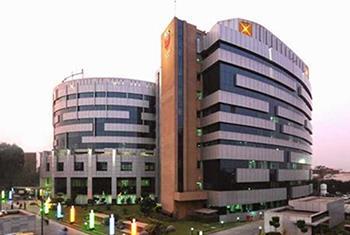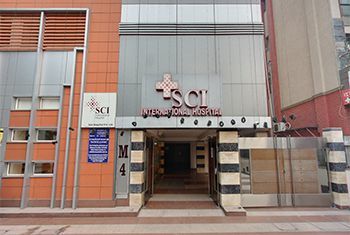Types of knee replacement surgery
Total Knee Replacement (TKR): This procedure involves the complete replacement of the knee joint with an artificial implant, made of metal alloys and plastic components. It might be ideal for patients with severe joint dysfunction or disease. In this, the damaged parts of the joint, the ends of thigh bone (femur) and shin bone (tibia) are removed. The knee is resurfaced and shaped to fit the appropriate size of prosthetic. The replacement made of metal is fixed on the end of tibia and femur using a flat metal plate. The fixing can be done using bone ‘cement’, or are by a ‘cement-less’ method. A plastic spacer is also placed between the metal parts, which acts as cartilage, making joint movement smooth. The replacement joint may last around 15-20 years.
Partial Knee Replacement (PKR): A partial knee replacement (PKR) is a less extensive surgery that is usually recommended when only one side of the knee is damaged. It involves a smaller incision, and less surgical trauma to the bone and tissues. The advantages to this operation is that PKR results in a shorter hospital stay, less risk of post-operative complications and faster recovery. It helps patients achieve a natural movement of the knee and enable them to be more active than with a total knee replacement.
Revision knee replacement surgery: This is a secondary operation, performed to replace the implants placed during the primary surgery. It is needed when the primary replacement wears off or is dislocated.
Minimal invasion surgery: This is a keyhole approach based operation that involves smaller incision, than in standard knee replacement surgery, to access the damaged knee parts. The knee replacement surgeon uses special instruments to reach the tissue and perform the operation. It is expected to result in a quicker recovery. The joint replacement surgery can also be performed with robotic arm. An advanced procedure, robot-assisted knee replacement offers more precision and eliminate hand errors.
The latest technology such as computer-navigation system might also be used during the surgery. This technology helps by providing images through the infrared cameras on a screen on the operating theater. This offers more accuracy during this procedure and enables the surgeon to make minor incisions for accessing the joint.
Other advanced techniques at Apollo knee replacement include:
Total knee replacement using patient specific zigs
This is a new cutting edge technology in the field of joint replacement surgery. It involves the use of customized cutting blocks that are made before the surgery using images from CT scan of the patient’s knee and leg. These blocks are then used during the surgery to provide more accuracy for the placement of knee prosthesis. It also helps patient by resulting in reduced operative time, better surgical outcome, less blood loss, and shorter hospital stay as well as faster recovery.
This is “Made in India-Made for India” technology that has been designed and developed by a leading US based company with research and development centre in India. The innovative customized zig meets the quality standard for Knee Replacement procedure.
Minimally Invasive Knee Replacement (Resurface) Surgery (MIKRS) using OrthoGlide Medial Knee system.
OrthoGlide is a wedge-shaped device made of metallic which is used to replace the worn cartilage of the knee. This novel implant offers a less invasive option in comparison to the total knee replacement. It is inserted into the knee using a smaller incision, and has many advantages such as the pressure relief, restoration of proper joint alignment, more stability and redistributes the weight more evenly.
This technique is a less expensive alternative with a less complicated way of regaining normal functions. It is a novel method for active and young patients having knee arthritis, who are concerned about the operation surgery and a lengthy post-operative rehabilitation.







